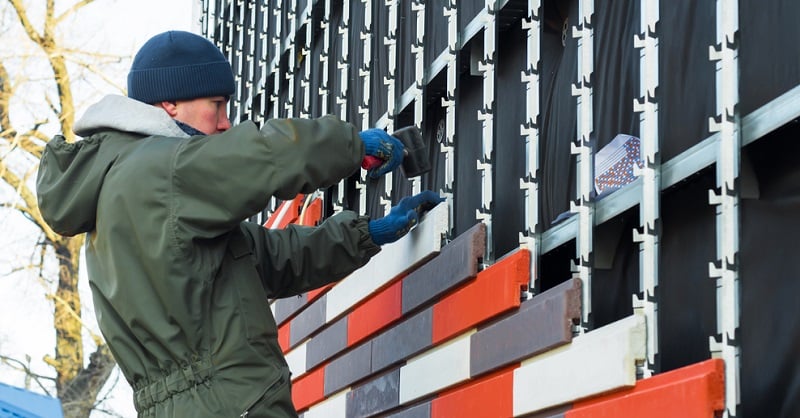
Kevin Webb is managing director of Legal & General Surveying Services
It is more than two years since the tragedy at Grenfell, and still there is a huge amount of confusion about the “safety of a building” and how the scope for the interpretation of that safety is creating huge amounts of uncertainty.
We have never before had a situation where buildings that have met the building regulations that existed at the time of their build (or re-fit) are now being tested against newer revised standards.
The government’s Advice Note 14 has led to a position where blocks are theoretically being tested retrospectively against higher standards with different criteria.
The fall out is at best long delays to remortgaging and sales and, at worst, complete breakdown of a transaction.
Cladding pressure
This issue is not going to go away. Estimates suggest there are up to 20,000 privately owned properties across the UK with cladding similar to the Grenfell materials.
While Barratt Developments, Legal & General, Taylor Wimpey, Peabody, Aberdeen Asset Management, Frasers Property and Mace have all agreed to pay to remove cladding from affected apartment blocks under their purview, pressure from politicians and consumer groups to get all developers and freeholders to pay for cladding to be stripped from existing buildings has failed.
According to the government’s own figures, leaseholders in 93 private towers are not protected from remediation costs and works have been completed on just 10.
Further government figures showed that in May this year, 166 private residential buildings out of the 176 identified with aluminium composite material cladding are yet to start work on removing and replacing it.
There remains a lack of clarity on who is responsible for the cost of removing cladding, particularly where blocks have multiple owners.
Some homeowners are still being told they’ll have to stump up thousands of pounds towards building work.
And there are still many firms and individuals refusing to do the necessary work, prompting the former communities secretary, James Brokenshire, to confirm plans for a multi-million pound fund to support upgrades to privately owned buildings in England affected by ACM cladding back in May.
However, we’ve had a wholesale change of government since then and political priorities in Westminster have been somewhat superseded by negotiations in Europe. Homeowners meanwhile are still facing remortgage issues which are costing them money every month. Just last month the London’s Evening Standard reported on the case of Rob Leary, who having bought his flat in London for £340,000 approached his lender to remortgage in order to pay out his recently ex-girlfriend.
His property has not yet been inspected for compliance with safety guidance issued by the government back in December, leaving him in limbo and his lender, understandably, unable to provide a decision on the refinance without it.
The issue is that where questions about cladding are off redbook, many large firms would rather not be involved because of future litigation risk.
This is being compounded by the many freeholders who remain confused about what certification they should have and whether proof that a building passd building regulations when it was constructed should be enough for it to pass today.
Over and above all that is the confusion about whether a building should fall under new standards.
At least one freeholder is disputing his building exceeds the 18m high rule that qualifies the building for the new standards. Often freeholders do not know what test certificates they have and surveyors do not know what certificates to ask for.
The impact of this confusion and the resulting financial strains on homeowners cannot be over-estimated. Speaking to the BBC when Brokenshire announced the fund earlier this year, he said: “What has been striking to me over recent weeks is just the time it is taking and my concern over the leaseholders themselves - that anxiety, that stress, that strain.”
The time it is taking to deliver on promises to make properties affected by ACM cladding safe is costing leaseholders money for every minute that goes by without the work being done and presenting the potential for future claims of compensation – from whom, is as yet unclear.
As one leaseholder pointed out in an interview with the BBC, however, if this was a car with a faulty airbag that posed a risk to passengers’ safety, it would have been recalled. That the same thing is not true of a person’s home tells you a lot about property law..
Commercially, the risk presented by a lack of valuation is steadily rising, we are coming to the point when it will outweigh the risk presented by an inaccurate valuation.
At LGSS we are working closely with RICS to come to a conclusion on what the definitive guidance on cladding should be, to allow lenders the clarity they need to progress remortgage applications such as Leary’s. We are not refusing to value but we need industry-wide clarity quickly as there are those who are.
We are being judged as an industry on how we have reacted to the protection of homeowners put at risk by cladding.
Not only has it taken too long to deliver safer homes to all those affected, it must not take any longer to rectify the corollary issues of valuation that have resulted.



